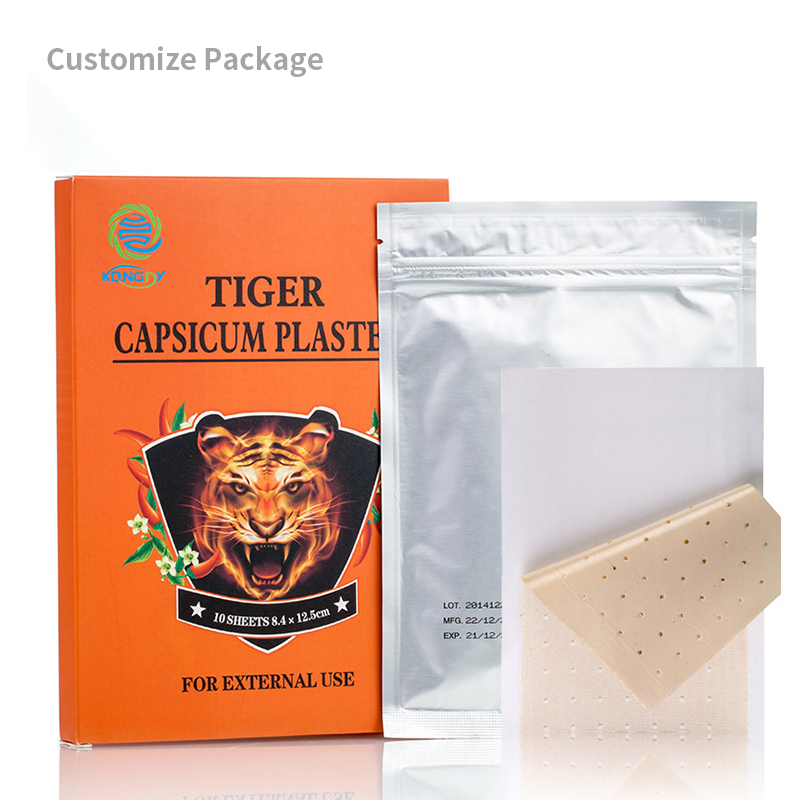How Customization Impacts the Cost of Manufacturing Custom Capsicum Plaster for OEM
In the manufacturing landscape, OEM (Original Equipment Manufacturer) capsicum plaster production has witnessed a significant shift towards customization. This trend, though appealing to consumers for its personalization options, poses unique challenges to manufacturers in terms of cost control. This article delves into the various factors that influence the cost of manufacturing custom capsicum plaster for OEM and provides insights into how these costs can be managed effectively.
1. Material Selection and Cost
The choice of materials is a critical determinant of the overall cost of manufacturing custom capsicum plaster. Standardized capsicum plaster components often utilize mass-produced materials that benefit from economies of scale. However, with customization, manufacturers may need to source specialized materials that may be more expensive due to lower production volumes or specialized requirements.
To mitigate this, OEM capsicum plaster manufacturers can establish long-term relationships with suppliers to negotiate better prices for specialized materials. Additionally, analyzing market trends and forecasting demand can help manufacturers plan ahead and lock in favorable material prices.
2. Design Complexity and Manufacturing Process
Customization often involves more complex designs and manufacturing processes compared to standardized products. The intricate patterns, colors, and sizes required for custom capsicum plaster can increase the number of production steps and the use of specialized machinery. This complexity can lead to increased labor costs, longer production times, and higher overhead expenses.
To address this, manufacturers can invest in flexible manufacturing systems that can efficiently handle a wide range of product variations. Additionally, using automation and robotic technology can help streamline production processes and reduce labor costs.
3. Inventory Management
Customized capsicum plaster typically requires managing a more diverse inventory of components and materials. Maintaining sufficient stock to meet demand while avoiding overstocking can be a challenge, especially for smaller OEM manufacturers. Overstocking leads to increased storage costs and potential obsolescence, while understocking can result in lost sales and customer dissatisfaction.
To optimize inventory management, manufacturers can utilize advanced inventory planning software that incorporates demand forecasting and supply chain analysis. This can help manufacturers predict demand patterns and adjust inventory levels accordingly.
4. Quality Control
Customized products often require stricter quality control measures to ensure consistency and adherence to customer specifications. This can involve additional inspection steps, testing, and potentially higher rejection rates. These quality assurance measures can increase the overall cost of manufacturing.
To balance quality and cost, manufacturers can adopt lean manufacturing principles that focus on preventing defects rather than detecting them. Additionally, investing in advanced quality inspection equipment and training personnel can help improve efficiency and reduce errors.
5. Marketing and Distribution
Customized capsicum plaster often requires more targeted marketing and distribution efforts compared to standardized products. Manufacturers may need to invest in advertising, promotional materials, and specialized distribution channels to reach their target market.
To minimize marketing and distribution costs, manufacturers can leverage digital marketing techniques such as social media advertising and e-commerce platforms. Additionally, building partnerships with distributors and retailers who specialize in customized healthcare products can help expand market reach while reducing distribution costs.
In Conclusion
Customization in OEM capsicum plaster manufacturing presents both opportunities and challenges in terms of cost control. By understanding the factors that influence cost and adopting strategies to mitigate them, manufacturers can effectively manage the cost of customization while delivering high-quality products to their customers.
Related Questions and Answers
- How can OEM capsicum plaster manufacturers reduce the cost of customized products?
By establishing long-term supplier relationships, investing in flexible manufacturing systems, optimizing inventory management, and adopting lean manufacturing principles. - What are the main challenges in managing the cost of customized capsicum plaster?
The main challenges include higher material costs, complex design and manufacturing processes, inventory management, quality control, and marketing and distribution efforts. - How can OEM manufacturers leverage digital marketing to reduce distribution costs?
By utilizing social media advertising and e-commerce platforms, OEM manufacturers can expand their market reach while reducing distribution costs. - What is the role of quality assurance in managing the cost of customized capsicum plaster?
Strict quality assurance measures help ensure consistency and adherence to customer specifications, but they can also increase overall costs. Balancing quality and cost through lean manufacturing principles and advanced inspection equipment can help manufacturers optimize their operations.






